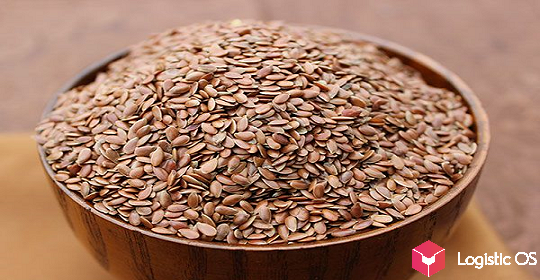In the last week, the domestic market of the Russian Federation continued to fall, experts note, while the fluctuations are relatively small.
At the moment, prices for wheat of the new harvest, which should be harvested in the fall, are already being formed in the Russian Federation.
Currently, a ton of such wheat costs about 15 thousand rubles. French wheat costs about the same now, and Romanian and American wheat are slightly cheaper.
We are talking about the cost when concluding contracts with deliveries for the future in deep-water ports.
If we talk about changes in prices for Russian wheat in June compared to May, then it remained at about the same level as a month ago, analysts note. This is about 243-244 dollars per ton.
It is noteworthy that wheat from other countries fluctuated in price more. For example, American wheat rose in price by 1% and now costs 222 dollars per ton. European wheat fell by 3% at once and is now trading at about 228 dollars per ton.
However, at the moment, wheat from Russia is more expensive than similar products from other countries. This may reduce the demand for Russian products in the future.
Wheat exports from the Russian Federation are currently continuing to fall.
A year ago in May, they amounted to about 5.2 million tons, but now they have dropped significantly: to 2.1 million tons. This is a 2.5-fold drop.
Moreover, the number of countries buying Russian products is rapidly declining. A year ago, there were 50 of them, and now there are only 18 left. This reduces diversification and increases dependence on specific buyers.
At the moment, the leader in terms of imports of Russian wheat is such a state as Iran.
According to available data, it bought 342 thousand tons in May. This is almost 5 times more than in May 2024.
In second place is Turkey, which bought 323 thousand tons from Russia. It is noted that compared to last year, this is a 41% drop, so such dynamics can hardly be called positive.
Egypt is in third place in terms of purchases of Russian wheat with an indicator of 300 thousand tons. Here we see a more than twofold drop: last May it bought 746 thousand tons.
Bangladesh and Sudan are also in the top 5 buyers of Russian products.
In general, exports are currently declining: May deliveries of 1.9 million tons are even less than April’s 2.4 million.
This is facilitated by low carryover stocks, expectations of an average harvest, as well as a record strengthening of the ruble, which leads to the fact that for every dollar earned, agricultural producers receive less Russian currency than before.

